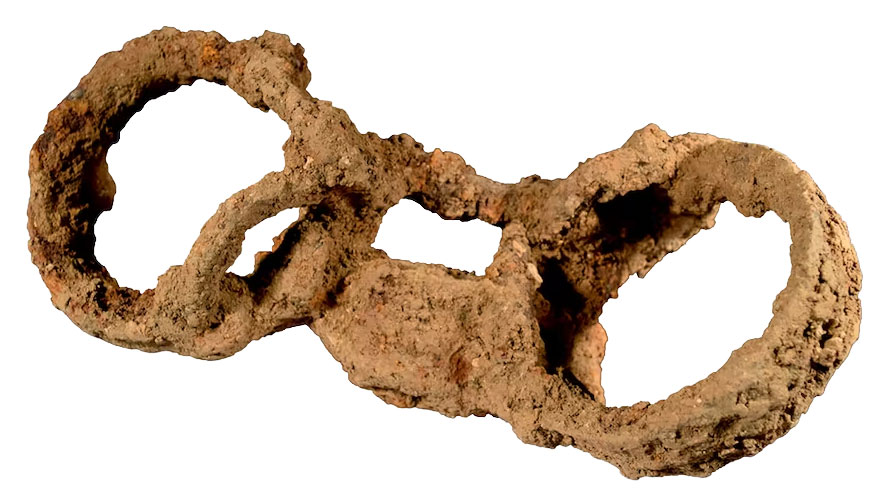
Prefazione:
Recentemente ho ricevuto un articolo del 2018 di una certa Arienne King intitolato "L'impero romano in Africa occidentale" che, tra le altre cose, si concentra sulla tratta degli schiavi in Africa e sul gruppo relativamente piccolo di schiavi africani1, per lo più bambini, che vennero trasportati a Roma.
Oggi, quando parliamo di schiavi, generalmente pensiamo alla popolazione africana nera. Attualmente, in molti paesi, non ultimi i Paesi Bassi, si sta accendendo una notevole attenzione sulla schiavitù del passato XVII secolo nei paesi che ne sono stati protagonisti. L'opportunismo economico, il lavoro a basso costo e il senso di superiorità tipico dell’uomo bianco furono la principale forza trainante del fenomeno. Il ragionamento profondamente radicato secondo cui "un africano non può essere considerato un essere umano a tutti gli effetti e quindi non deve essere trattato come tale" 2. ) permise alla coscienza cristiana dei popoli occidentali di stare tranquilla. Il razzismo al suo meglio.
Purtroppo, la schiavitù, di qualunque forma si tratti, esiste da quando esiste l’uomo. Anche i Romani ne furono colpevoli. Potremmo dire che, per quantità, gli 8 secoli di schiavitù praticati nell'Impero Romano d'Occidente che hanno movimentato attraverso 3 continenti decine di milioni di schiavi, furono i precursori della schiavitù transatlantica del XVII secolo. La domanda che sorge quindi è: fino a che punto la schiavitù romana può essere paragonata alla schiavitù africana del XVII secolo?
In un precedente articolo sulla città portuale di Massalia, ho ricordato che già al tempo della repubblica romana, la Gallia riforniva Roma di schiavi. Quindi penso che sia arrivato il momento di approfondire la storia della schiavitù e della tratta degli schiavi dell'Impero Romano. Dopo tutto, gli schiavi venivano trasportati da un porto all'altro come merce. E, come schiavi o come liberti (schiavi liberati), svolgevano molti dei compiti quotidiani all’interno e attorno ai porti toccati dai Romani.

IL SERVUS ROMANO4
"Lascia che gli schiavi meritevoli si siedano, in modo che possano alzarsi liberi."

Naturalmente alla base della schiavitù c’era sempre lo stesso concetto: una persona diventa proprietà di un’altra. E, in quanto “proprietà”, anche sotto il diritto romano gli schiavi non avevano personalità giuridica, quindi, a differenza dei cittadini Romani, potevano essere sottoposti a punizioni corporali e persino ad esecuzioni sommarie. Finora quindi, nessuna differenza. Tuttavia, in seguito, gli schiavi ottennero una certa tutela legale, incluso il diritto di sporgere denuncia contro i loro padroni.
Di fatto, la schiavitù aveva un ruolo importante nella società e nell'economia nell'antica Roma. Oltre al lavoro manuale, gli schiavi svolgevano molti servizi domestici e potevano essere impiegati in lavori e professioni altamente qualificate. Contabili e medici spesso erano schiavi. In particolare erano noti per il loro alto livello di istruzione gli schiavi di origine greca. Tuttavia, gli schiavi non qualificati o coloro che divenivano schiavi a seguito di una condanna, di solito lavoravano nelle fattorie, nelle miniere e nei mulini. I pirati che venivano catturati di solito venivano condannati a una vita di schiavitù sulle galee.
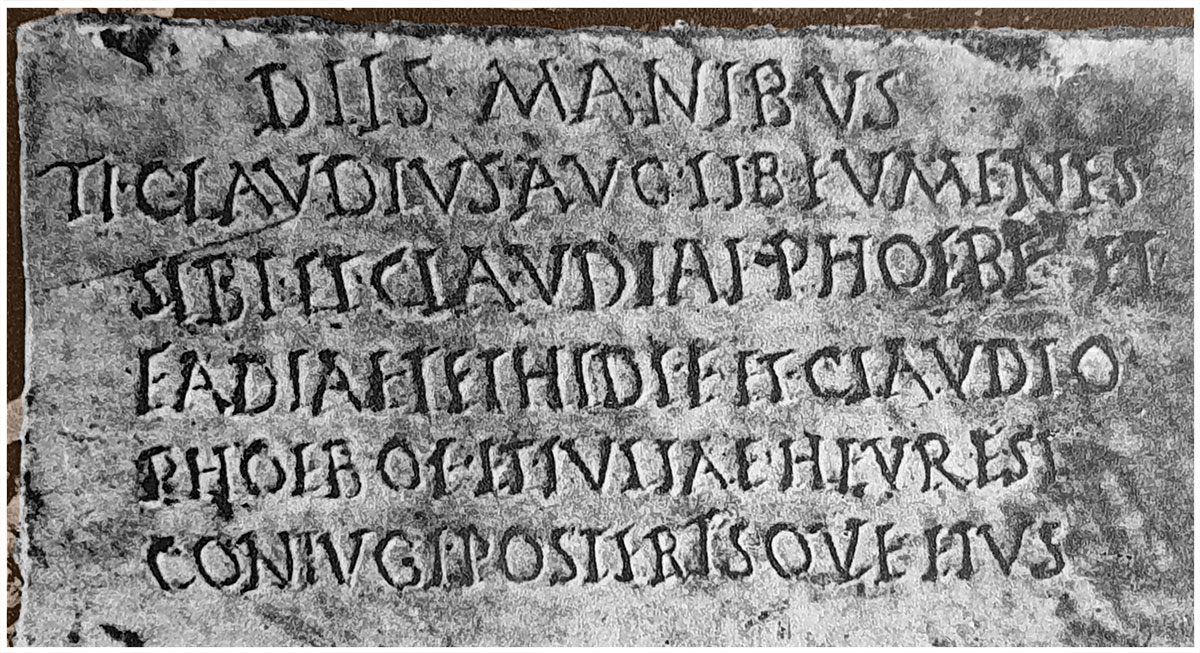
Tiberius Claudius Eumenes, liberto dell'imperatore (eresse questo monumento) a se stesso e a Claudia Phoebe e Fadia Tethis, sue figlie, e Claudius Phoebus, suo figlio, e Iulia Heuresis, sua moglie, e i loro figli.
La necropoli romana di Portus, Isola Sacra, contiene molte iscrizioni tombali di liberti, e ad Ostia ci sono horrea (magazzini, sing. horreum) dei fratelli Epagathiana ed Epafroditana, due liberti. Uno dei magazzini, pesantemente fortificato, era probabilmente destinato a conservare beni di lusso.
Un uomo che per anni aveva ricoperto una certa posizione come schiavo per il suo proprietario, spesso dopo essere stato liberato continuava a fare lo stesso lavoro per la stessa persona, ma come dipendente. I liberti erano considerati membri della famiglia, portavano nomi che indicavano i loro ex padroni e potevano beneficiare della rete familiare.
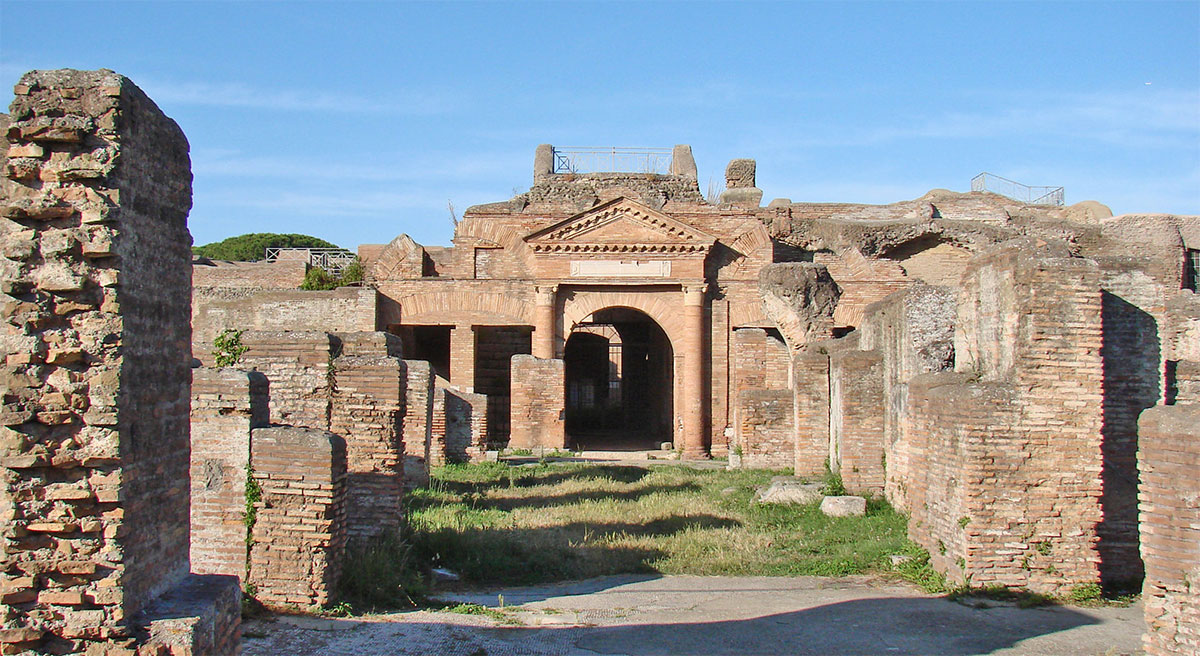
Sulla maggior parte delle iscrizioni tombali, quindi, il proprietario menzionava che tale tomba, oltre ai suoi parenti stretti, era per:
LIBERTIS LIBERTABVSQVE SVIS POSTE RISQVE EORVM,
(i suoi liberti e i loro discendenti).
Per comprendere meglio la versione romana del fenomeno della schiavitù, sarebbe opportuno esaminare innanzi tutto l'origine, la provenienza e il contesto giuridico della schiavitù romana.
La base giuridica della schiavitù in epoca romana.
Il giurista romano Gaio scrisse intorno al 161 d.C. nelle sue Institutiones9 (institutions):
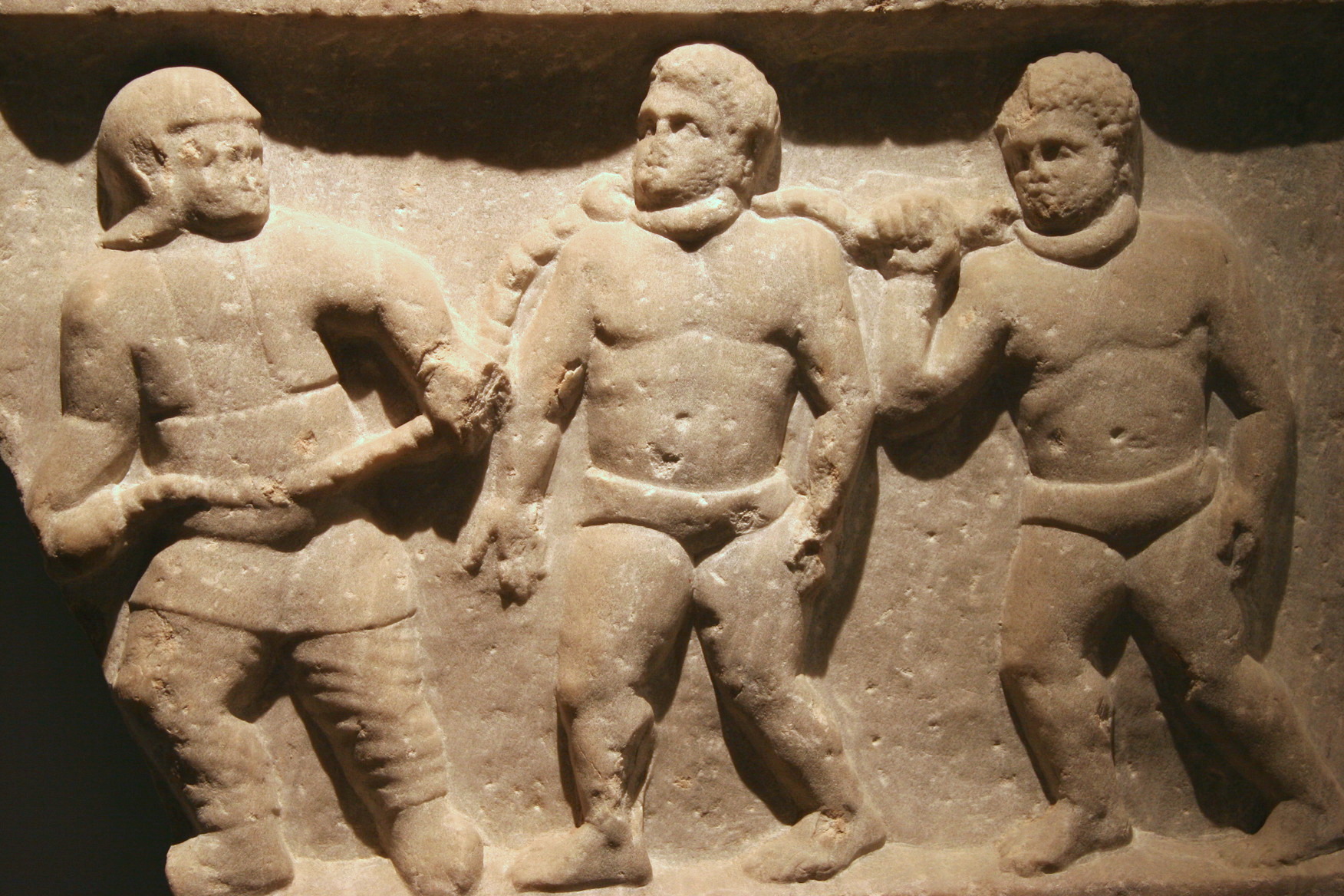
Sebbene la "legge naturale" dei Romani dicesse che tutte le persone nascono liberi (libere), la schiavitù era considerata una pratica comune a tutti i popoli della terra, una sorta di diritto comune che non faceva distinzione di razza, colore o rango.
Lo storico greco Dionigi di Alicarnasso, che visse nel primo secolo a.C., disse che la schiavitù tra i Romani era antica quanto il loro leggendario fondatore Romolo, che offrì ai padri Romani il diritto di vendere i loro propri figli come schiavi.
Ancora prima dei Romani, le guerre erano un'importante fonte di schiavi. I popoli conquistati erano considerati parte del bottino di guerra e spesso portati via come schiavi dai vincitori. Chi non conosce l'opera Aida, in cui i nubiani sconfitti vengono esposti un una parata trionfale come schiavi del popolo egiziano?
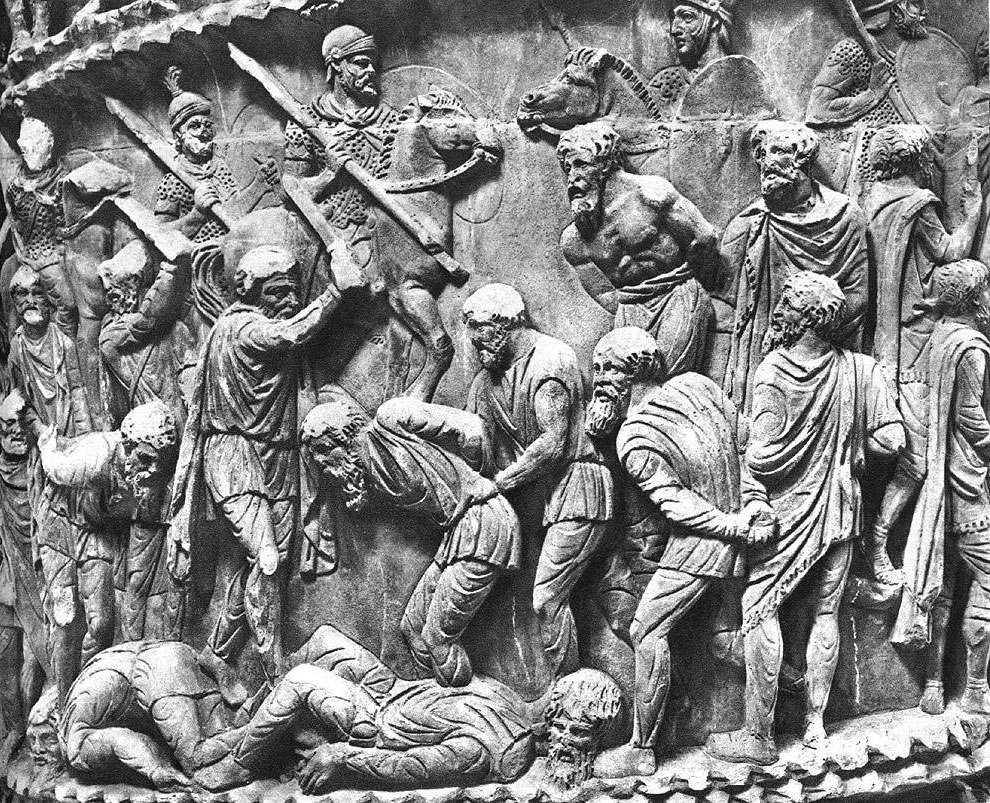
Con l’inizio dell’espansione romana, e soprattutto dalla seconda guerra punica (218-201 a.C.), la proprietà degli schiavi diffuse molto tra i cittadini Romani. Durante la conquista della Sardegna nel 177 a.C., Tiberius Sempronius Gracchus (163-133 a.C.) schiavizzò 80.000 abitanti dell'isola. "A buon mercato come un sardo" divenne un modo di dire tra i romani, derivava da questa vittoria, e ben illustra l'impatto che questo evento ebbe sul prezzo degli schiavi. Ma c’è di peggio. Dopo la terza guerra macedone nel 168 a.C., Roma condannò 300.000 greci alla schiavitù. Eppure questo numero impallidisce di fronte al mezzo milione di schiavi emersi un secolo dopo dalla guerra gallica di Gaius Julius Caesar (100-44 a.C.). E non c’erano solo le vittorie romane a procurare schiavi: li procuravano anche le guerre tra altre tribù e popoli, visto che gli sconfitti poi spesso finivano sul mercato degli schiavi nell'Impero Romano. Fu così che si sviluppò un vivace commercio internazionale di persone.
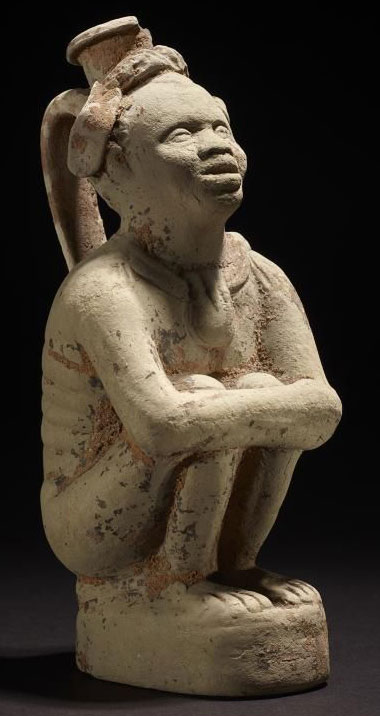
africano accovacciato 13.
Arienne King scrive, nel suo saggio menzionato all’inizio "L'impero romano in Africa occidentale", che, ad un certo punto, nel primo secolo d.C. i Romani erano penetrati nell'attuale Africa fino al fiume Niger, dove elefanti e rinoceronti vagavano intorno a un grande lago (purtroppo, non cita una fonte).
Di solito i Romani facevano trasportare le merci provenienti dalle parti meridionali dell'Africa dai commercianti locali attraverso le rotte carovaniere esistenti, fino ai porti mediterranei sulla costa del Nord Africa. Da lì, tutto veniva portato a Roma via nave. E sì, parte di queste merci potevano essere schiavi dell'Africa centrale, anche se Arienne King precisa che probabilmente si trattava di pochi bambini schiavi destinati all'industria del sesso. Infatti il trasporto dal nord Africa era lungo e costoso, quindi per i Romani era più semplice ed economico ottenere schiavi in altri modi.
Tra l’altro, rendere schiavi gli ex soldati nemici non era una pratica esente da rischi, infatti causò una serie di rivolte armate. La più famosa fu la terza rivolta degli schiavi del 73 a.C. guidata da Spartacus.
Durante la Pax Romana (la pace romana del I e II secolo d.C.), le conquiste territoriali furono poche e la linea di approvvigionamento del traffico di esseri umani si prosciugò. Per mantenere gli schiavi in servizio, vennero introdotte crescenti restrizioni legali sul loro rilascio. Gli schiavi fuggitivi venivano ricercati, catturati e riportati indietro (spesso dietro ricompensa).
TENE ME NE FUGIA(M) ET REVOCA ME AD DOM(I)NUM VIVENTIUM IN AR(E)A CALLISTI
(Tienimi stretto, non lasciarmi fuggire, e riportami dal mio padrone Vivenzio nella tenuta di Callisto).
Testi come questo erano scritti su targhette di metallo che molti schiavi portavano al collo (vedi Figura 9).
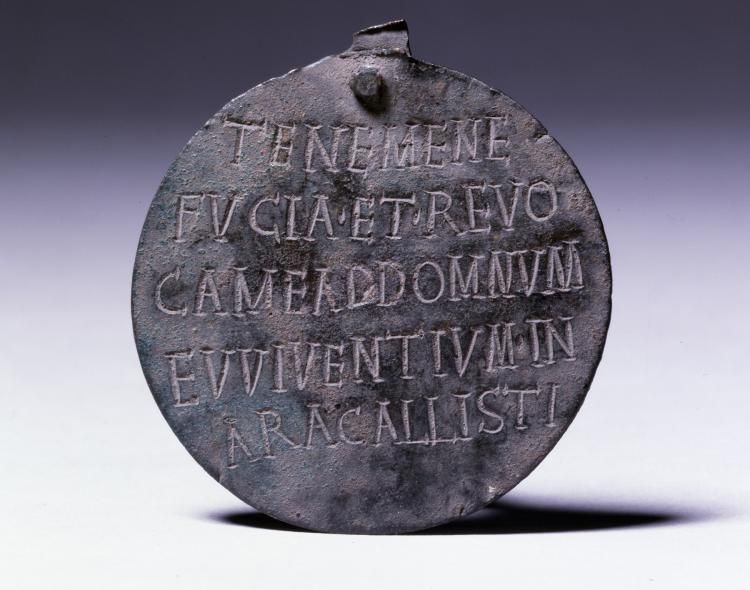
Abbiamo visto he la schiavitù non era derivata da particolari pregiudizi su colore della pelle, razza o religione. Anche se spesso un certo pregiudizio esisteva: un pregiudizio sulla provenienza. I Romani infatti erano convinti che ogni popolo avesse dei propri tratti caratteriali, e che questi determinassero se gli schiavi originari di tali popoli fossero adatti o meno a particolari professioni.
Lo studioso e scrittore romano Marcus Terentius Varro (116-27 a.C.)16 diede ai suoi lettori consigli su quali tipi di schiavi fossero adatti per determinati lavori agricoli. Ad esempio, a chi aveva bisogno di pastori, consigliava di comprare schiavi gallici e non bastulani o turduliani. Se il compratore avesse avuto anche bisogno di schiave donne che tenessero "compagnia" ai pastori, avrebbe fatto bene a prendere schiave dall’Illirico. Infatti le donne di questa regione erano "forti e piacevoli alla vista", nonché abituate alla difficile vita pastorizia.
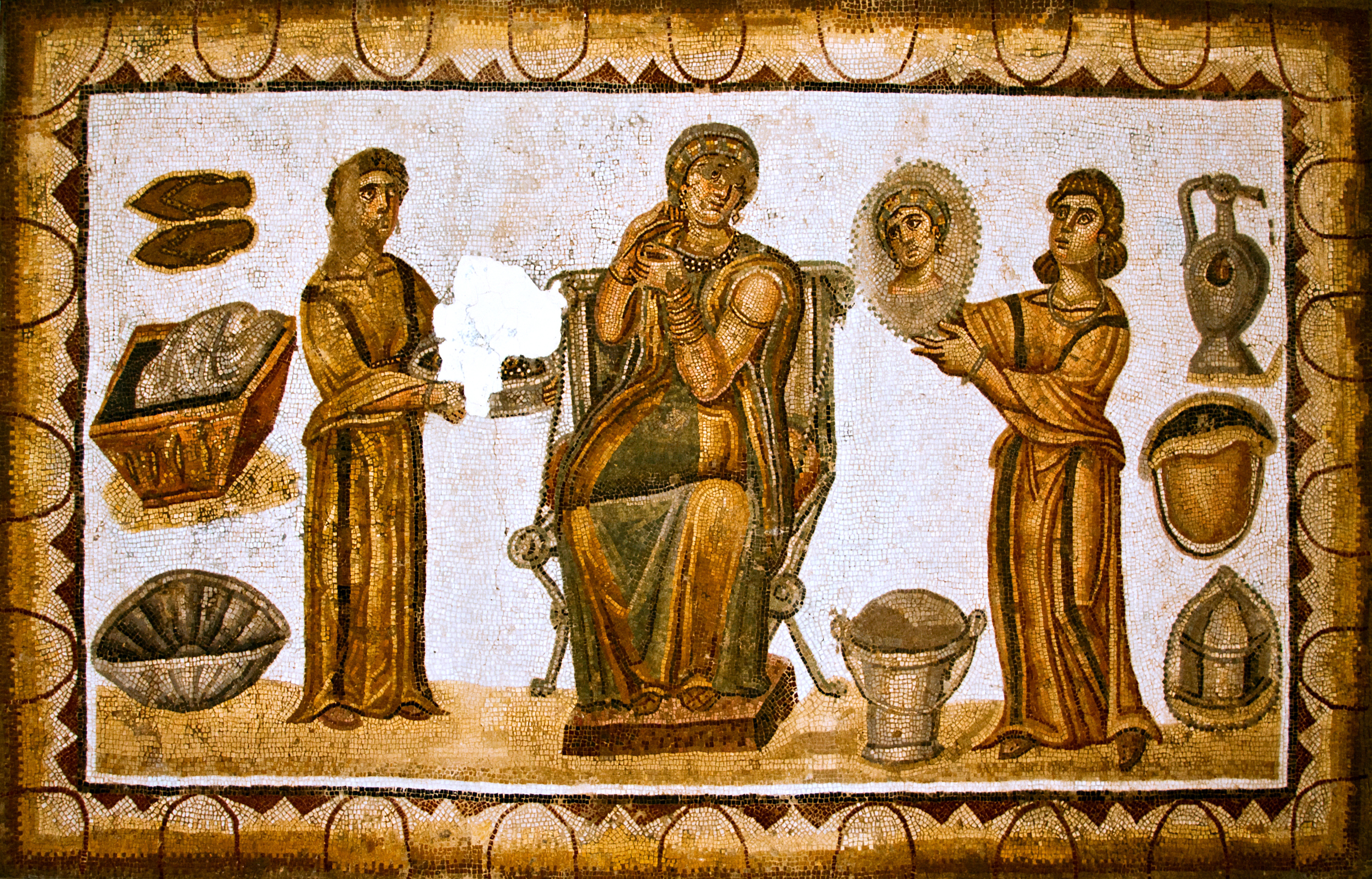
In una lettera al suo amico Varro nel 55 a.C., parlando degli schiavi provenienti dalla Gran Bretagna, Cicerone rimarcava il punto di vista romano sulla natura barbara ed incivile dei britannici: “Penso che tu non debba aspettarti qualcuno di loro conosca l’alfabeto né la musica”
Anche nel campo del sesso l’origine degli schiavi aveva un certo peso. Il poeta Marcus Valerius Martialis, che visse dal 40 al 104 d.C., disse che avrebbe preferito uno schiavo egiziano come “toy boy” per via della fama di dissolutezza che aveva quel popolo.
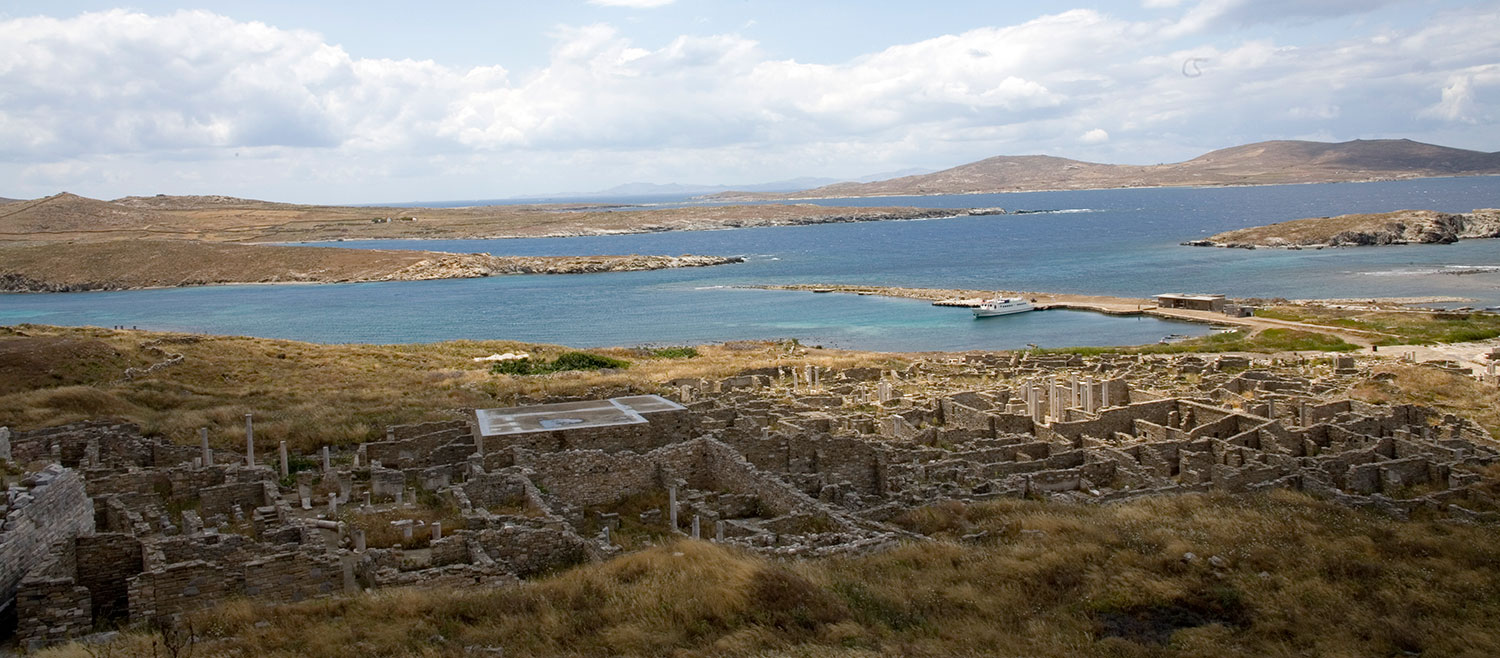
Dopo la morte di Alessandro Magno, l’isola greca di Delos divenne un porto libero e uno dei più importanti mercati di schiavi del Mediterraneo. Da lì molti schiavi, a volte fino a 10.000 al giorno, prendevano la strada delle proprietà terriere di molti Romani che avevano necessità di schiavi.
La tratta degli schiavi era redditizia anche per il governo centrale. Augusto impose una tassa del 2% sulla vendita di schiavi, e si stimava che arricchisse le casse dello Stato di 5 milioni di sesterzi l'anno, cifra che permette di calcolare tali vendite in circa 250.000 schiavi l'anno17. La tassa crebbe al 4% nel 43 d.C.
La tratta degli schiavi avveniva sotto la supervisione di funzionari Romani del fisco (quaestoren).
Gli schiavi venivano impiegati in una vasta gamma di lavori. Solo nel campo dei lavori domestici, le iscrizioni descrivono 55 tipi di lavori diversi. Uno schiavo poteva essere parrucchiere, cameriere, cuoco, segretario, contabile o medico. Il proprietario di unadomus in città o di una villa in campagna poteva facilmente avere un centinaio di schiavi a sua disposizione18.
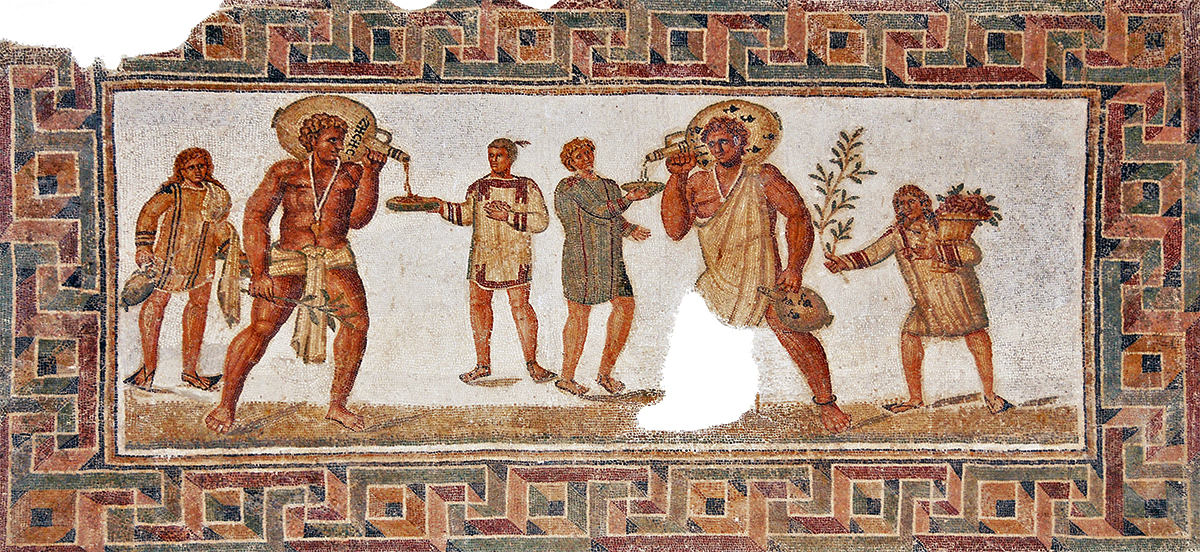
Sebbene le condizioni di vita degli schiavi legati a una domus, la residenza urbana, fossero peggiori di quelle delle persone libere con cui vivevano, erano comunque migliori di quelle di molti poveri liberi che vivevano a Roma20. Tra tutti gli schiavi Romani, quelli domestici probabilmente godevano del tenore di vita più elevato, insieme agli schiavi di proprietà del governo, che non erano soggetti ai capricci di un padrone silgolo21.
Gli schiavi imperiali erano quelli legati alla famiglia dell'imperatore, la familia Caesaris.
Inoltre, si potevano trovare schiavi in vari mestieri, dai calzolai ai conducenti di muli, dai fornai alle prostitute. Oltre alle molte decine di migliaia di schiavi che lavoravano nei fondi agricoli, familia rustica, molti schiavi e liberti lavoravano anche nel commercio marittimo, nei porti e sulle navi, come vedremo più avanti.
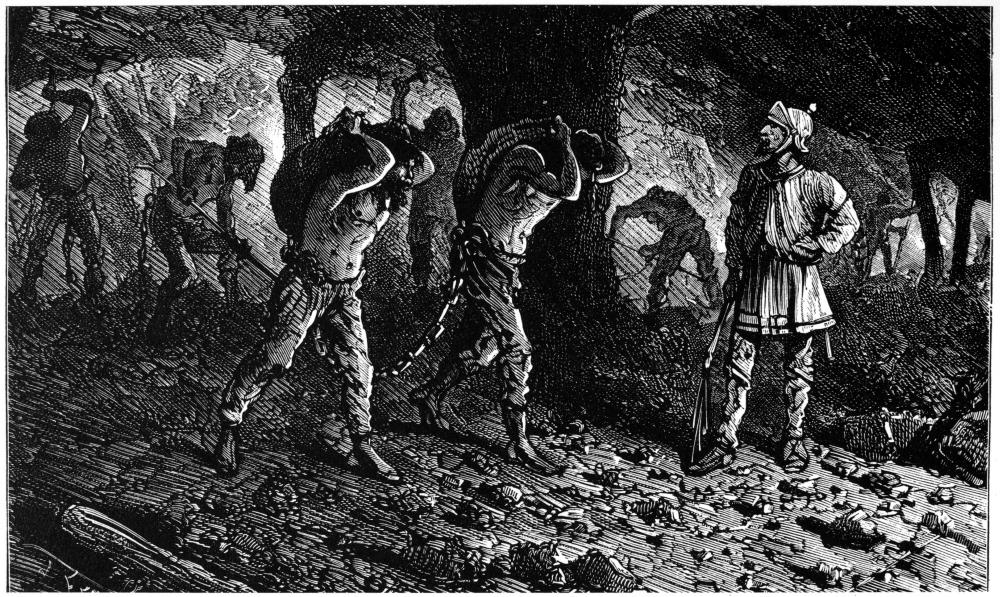
Gli schiavi che stavano peggio erano i damnati in metallum, quelli condannati a lavorare nelle miniere e nelle cave, dove le condizioni di vita erano notoriamente dure. Generalmente si trattava di cittadini che avevano perso la propria libertas (libertà) a seguito di una condanna: venivano spogliati della loro bona (proprietà) che andava allo Stato, e diventavano servi poenae (schiavi per punizione legale). Non potevano comprare la libertà, non potevano essere venduti né rilasciati, ed erano condannati a vivere e lavorare nella miniera fino alla loro morte23.
Un'altra categoria di schiavi erano i gladiatori che combattevano nelle arene per intrattenere il popolo romano. Nella tarda Repubblica, circa metà di loro erano schiavi.
Lo schiavo che stava meglio, come già detto, era il servus publicus (schiavo pubblico). Non era di proprietà di un privato ma dello Stato. Poteva lavorare in un tempio o in un altro edificio pubblico. Alcuni schiavi pubblici particolarmente istruiti svolgevano lavori d'ufficio ad elevata qualificazione, come tenere la contabilità delle istituzioni e seguirne la segreteria. A questi schiavi era addirittura permesso guadagnare soldi per uso personale24. Grazie all’opportunità che avevano di mostrare le loro capacità, potevano guadagnare reputazione ed influenza, e a volte riuscivano ad ottenere il manumissio (rilascio).
Nelle navi mercantili o da guerra più grandi, come le galee, i Romani usavano la forza di propulsione dei vogatori. Ma al contrario di come vengono spesso rappresentati in film come Ben Hur, non ci sono prove che i vogatori fossero criminali o schiavi condannati. La letteratura mostra che i vogatori, sia sulle galee greche che quelle romane, erano dipendenti stipendiati oppure soldati. Solo in tempi di grave crisi le navi venivano equipaggiate con schiavi. E poteva accadere che questi schiavi poi riacquistassero la loro libertà e si offrissero come volontari per servire a bordo da uomini liberi25.
Le navi mercantili a vela più piccole avevano poco spazio per i vogatori, ma erano equipaggiate da schiavi, e a volte avevano persino uno schiavo come capitano26. Questo ci porta al tema degli schiavi che lavoravano dentro e attorno ai porti, e a quelli coinvolti nel commercio estero.
Porti Romani, schiavi e liberti
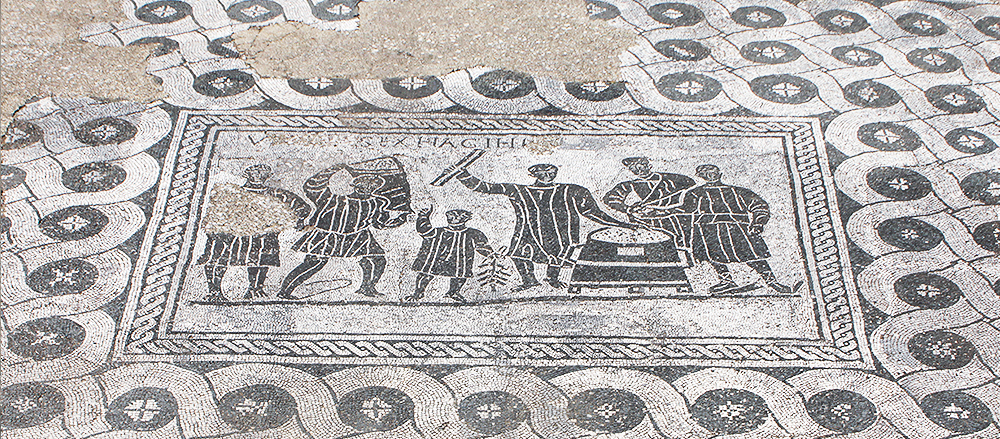
La maggior parte degli schiavi impiegati nei porti non aveva qualifiche particolari e serviva sotto l'autorità diretta di un padrone. Siccome i porti erano punti di trasbordo per merci di importazione ed esportazione, c'era un grande bisogno di magazzinieri. La logistica richiedeva che le merci fossero sbarcate, e - prima di essere reimbarcate - fossero temporaneamente immagazzinate negli horrea (magazzini).
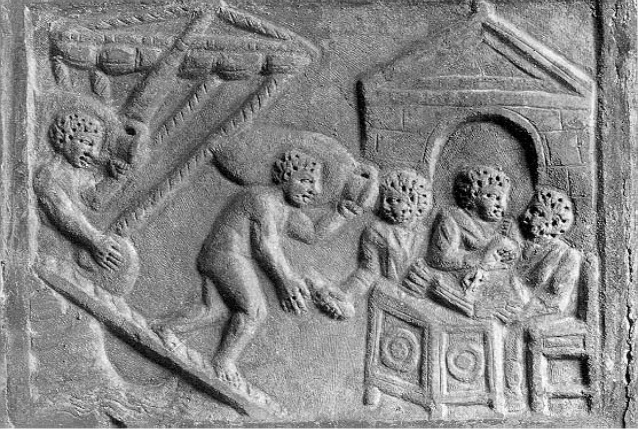
in un porto29.
E’ arrivata fino a noi una tavoletta proveniente da Pozzuoli che descrive schiavi con impieghi molto diversi:
“Il 13 marzo 40 d.C., il mercante di grano L. Marius Iucundus prende in prestito ventimila sesterzi dal finanziere C. Sulpicius Faustus. Per questo, quest'ultimo riceve tredicimila modii 30 di grano proveniente da Alessandria come garanzia, e affitta una stanza dal magazziniere P. Annius Seleucus per cento sesterzi al mese. Seleucus è analfabeta e fa redigere il contratto dal suo schiavo Nardus. Poi Seleucus e i suoi schiavi vanno a misurare il grano.”
Qui si parla chiaramente di due diversi tipi di schiavi sotto lo stesso padrone. Nardus, menzionato per nome, era letterato e redigeva contratti. Altri schiavi invece erano pesatori di grano.
Poiché parte del trasbordo dei carichi avveniva in mare attraverso piccole navi mercantili, i porti e i loro dintorni erano costantemente attraversati da una vera e propria flotta di piccole imbarcazioni. Inoltre le navi dovevano anche essere rimorchiate in entrata ed in uscita dal porto. Le prove di questi traffici sono evidenti, oltre ad Ostia, anche negli scavi di città portuali come Arles e Rimini.
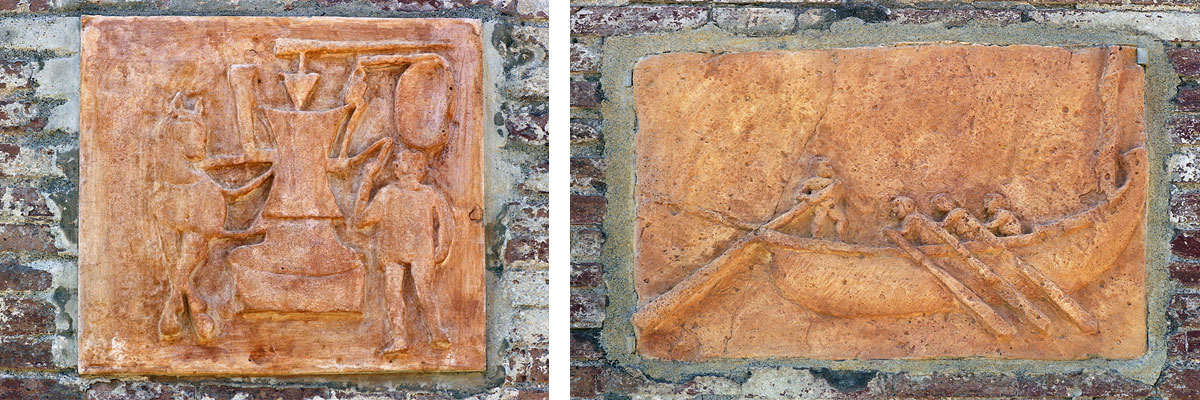
Ad esempio, un bassorilievo in terracotta che adorna una tomba nella necropoli di Isola Sacra (cimitero di Portus) raffigura un rimorchiatore con un timoniere e tre rematori. La targa di marmo sopra l'ingresso della tomba (la numero 78) indica che il monumento fu costruito nei primi decenni del II secoli secolo da Ti Claudius Eutychus per sé stesso, sua moglie, i suoi figli e i suoi liberti. Ancora, la facciata della tomba contiene anche un secondo bassorilievo raffigurante il mulino di una panetteria, con un uomo che guida un asino o un cavallo che fa ruotare la macina. A quanto pare, Eutychus era un proprietario di schiavi che esercitò due diverse attività durante la sua vita. Poiché il lavoro effettivo era svolto dagli schiavi, possederne un buon numero permetteva ai padroni di occuparsi di attività diverse contemporaneamente. Questo era estremamente frequente. Sfortunatamente, i due rilevi non ci dicono nulla sullo status giuridico né dei vogatori né dei guidatori di asini.
Gli utilizzatori di imbarcazioni come le Scaphae e i Lenunculi, chiamati scapharii e lenuncularii di Ostia e Portus, ci hanno lasciato molti registri, ed erano membri di una delle cinque collegia (ordini professionali)31. Le liste dei membri di tali associazioni erano accuratamente conservate, ed in alcuni casi sono arrivate intatte fino a noi. Questi elenchi rivelano due informazioni sorprendenti: dell’ordine non faceva parte nessuno schiavo, al contrario c’erano molti liberti 26.
Escludere gli schiavi non era obbligatorio, solo che probabilmente non erano considerati degni di appartenervi, visto che generalmente svolgevano gli aspetti più umili della professione, come tonneggiare lungo la riva le navi che erano entrate in porto. (Nota del traduttore: Tonneggiare è un termine italiano che descrive il lavoro di trainare imbarcazioni da riva, da persone a piedi, animali o altri mezzi, tirando cime legate alla barca.
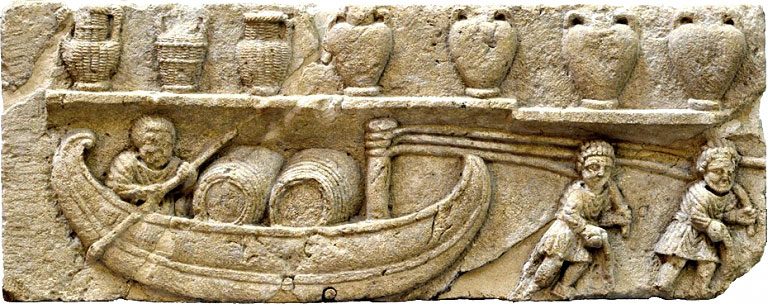
Spesso, il corso tortuoso dei fiumi o le forti correnti rendevano impossibile la navigazione a vela. Da diverse immagini rinvenute di recente, sappiamo che le navi di tipo naves codicariae e lintres, entrambe di tipo fluviale, erano particolarmente utilizzate in questi contesti. Ma come si spostavano? Prima del VI secolo d.C., erano soprattutto tonneggiate (vedi nota sopra) da schiavi che camminavano lungo la riva (in un'immagine rinvenuta a Pompei si vede una barca sul Sarno trainata da cavalli, mentre non risulta venissero usati i buoi).
Quanto dovesse essere duro questo lavoro si può immaginare pensando alla fatica di trainare una barca lungo il Tevere, da Ostia a Roma, con i “rimorchiatori” che dovevano ripetere lo stesso ritmico movimento per tre giorni, 11 ore al giorno34. Lo scrittore romano Martialis descrive i rumori che era possibile ascoltare lungo le strada a Roma. Menziona il rumore heliciariorum (il grugnito di coloro che tonneggiavano le barche) che si mescolava con il celeuma nauticum (il canto ritmico del timoniere)35.
Se un datore di lavoro, codocarii, lyntrarii o nautae possedeva diverse navi, lasciava che queste venissero gestite dai loro capitani, per lo più liberti, cosa che suggerisce che i liberti stessi , una volta divenuti capitani, possedessero schiavi a loro volta.
Come abbiamo appena visto, i ricchi proprietari di schiavi potevano facilmente gestire varie attività. I loro schiavi potevano essere assegnati ad un'attività o ad un'altra in base alle necessità, poiché la natura dei loro impieghi non li rendeva lavoratori specializzati. Nel caso del “tonneggio” di barche e dei vogatori, contavano solo la forza fisica e l'obbedienza. Questa categoria di schiavi non aveva alcuna autonomia professionale perché il loro lavoro non la richiedeva. Perché parliamo di autonomia? Vediamo.
Commercio oltremare
Le modalità con cui si svolgevano i commerci marittimi richiedevano ai commercianti, che non potevano essere presenti in più di un luogo alla volta, l’utilizzo di agenti. Questi ruoli venivano quindi assegnati a schiavi accuratamente scelti, che formavano quindi una piccola e privilegiata minoranza della popolazione schiava.
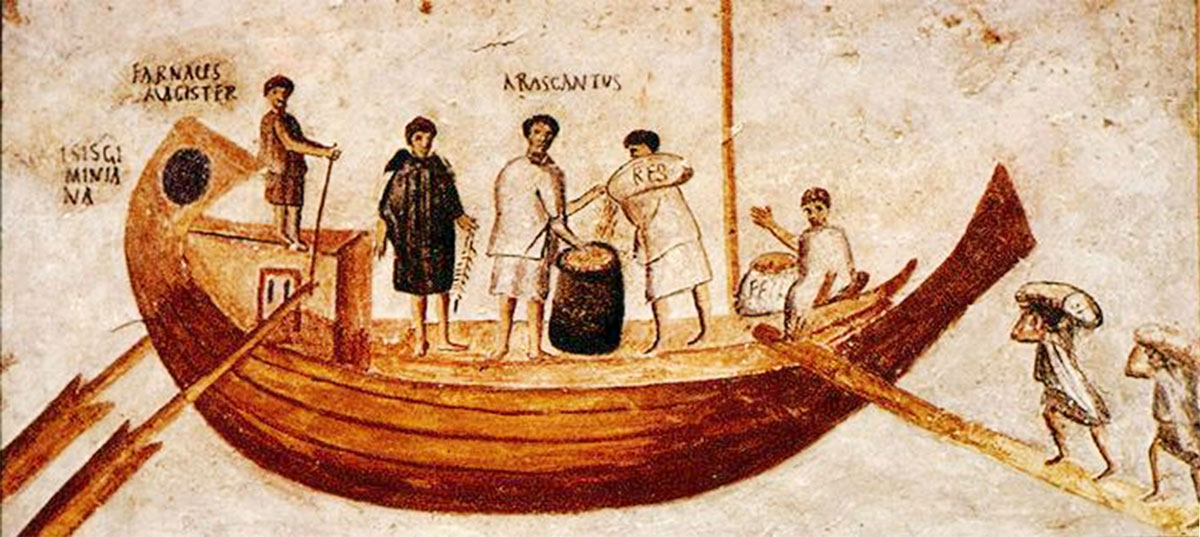
Il coinvolgimento di questo schiavo, Primus, in vece del suo padrone, si spiega con il fatto che Severus non poteva essere contemporaneamente a Baetica, Pozzuoli o a Roma, la destinazione finale della maggior parte dei prodotti inviati verso l’Italia.
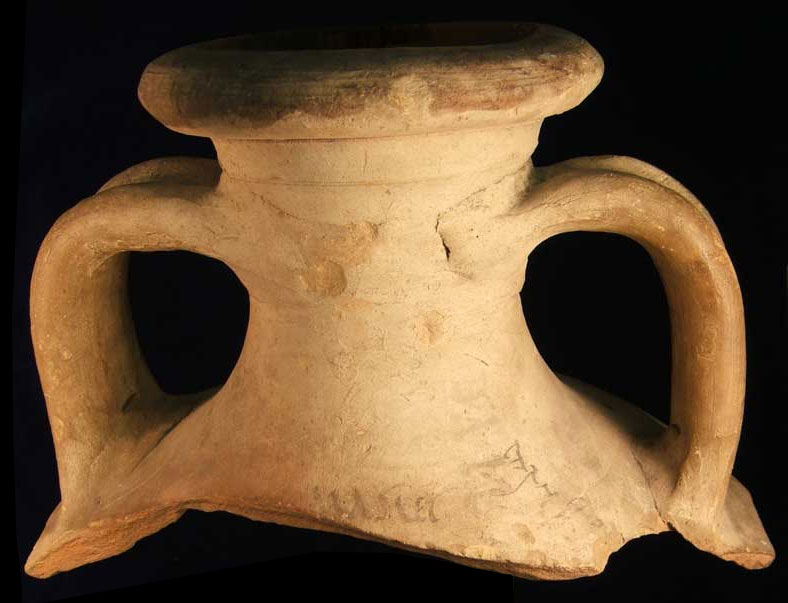
Navicularii (armatore) di solito possedeva diverse navi e non poteva essere contemporaneamente a bordo di ciascuna di esse. Tuttavia l’armatore doveva essere presente in porto per negoziare con i mercanti che cercavano vettori. Si affidava quindi a uno schiavo perché agisse come suo agente. Vista l'autonomia di cui godevano gli agenti nel loro lavoro quotidiano, la responsabilità di rappresentare il padrone non poteva essere affidata a schiavi poco o per niente qualificati. A chiunque fosse affidato questo compito, doveva essere orgoglioso della fiducia (relativa) che il padrone riponeva in lui.
Eppure, anche in casi come questo, lo status degli schiavi/agenti non era lo stesso per tutti, perché i compiti che questi svolgevano non erano uguali, né dal punto di vista tecnico né da quello delle conseguenze finanziarie. I padroni dovevano definire con precisione ciò che i loro agenti erano autorizzati a fare per loro conto. La portata dell’autorizzazione dipendeva da ciò che, di caso in caso, era stato preventivamente concordato, e da ciò che le terze parti potevano venire a sapere. In realtà, tuttavia, il giudizio dell'agente entrava spessissimo in gioco, poiché a distanza il padrone non poteva supervisionare ogni cosa. Lasciare che l’agente effettuasse scelte commerciali a propria discrezione poteva anche creare problemi.
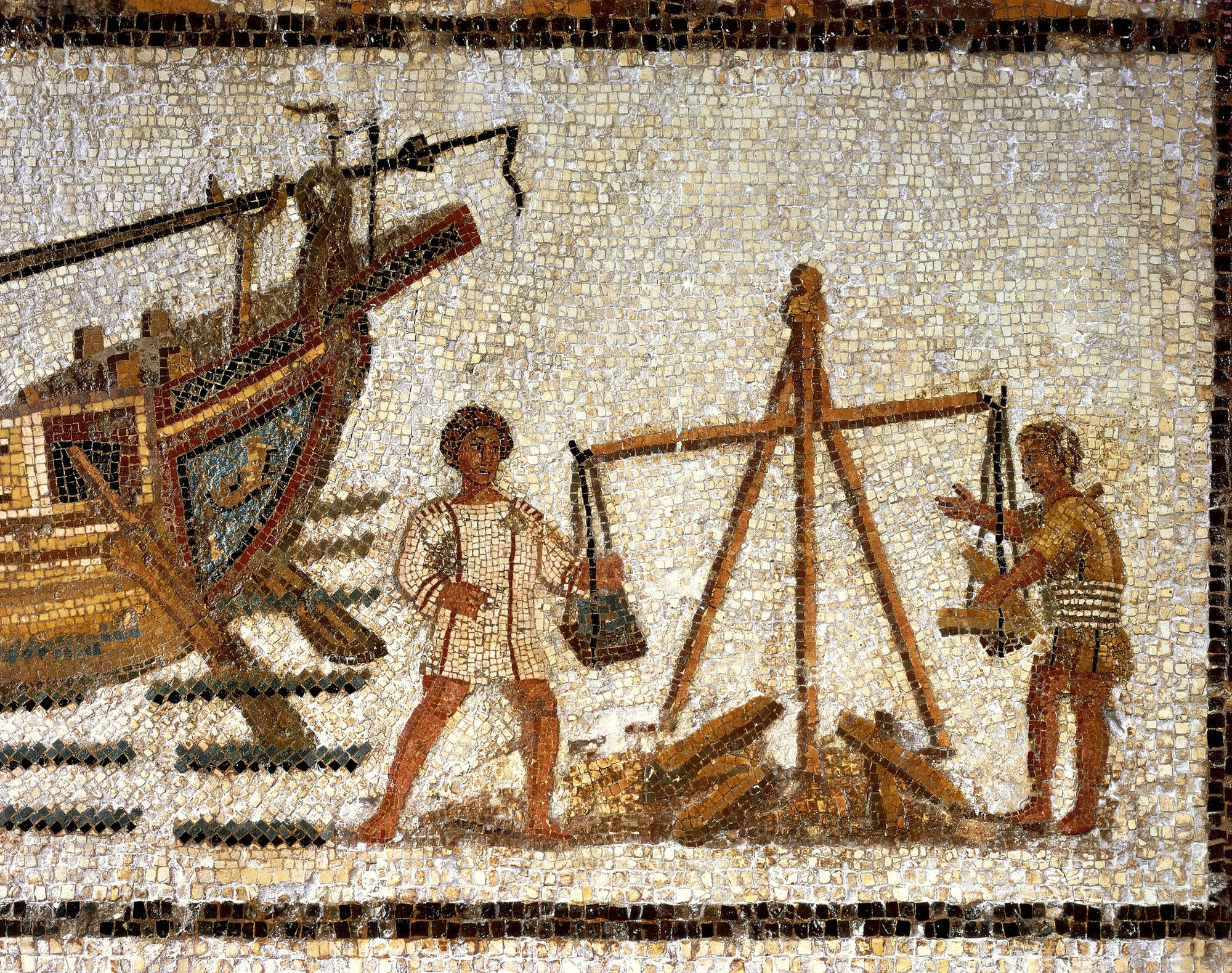
…..“Uno schiavo che lavorava per il suo padrone come agente di credito era scappato. Oltre a fornire semplici prestiti, lo schiavo, che spesso faceva affari con i commercianti di orzo, faceva anche da intermediario per i pagamenti delle transazioni tra commercianti. In tribunale, il padrone sostenne di non poter essere ritenuto responsabile dell’intermediazione, perché lo schiavo non era stato autorizzato esplicitamente. La corte respinse l’argomentazione del padrone, sostenendo che prestare denaro ai commercianti avrebbe logicamente portato lo schiavo a stipulare altri contratti la cui esistenza doveva essere nota al padrone. Ad esempio, lo schiavo doveva prendere in affitto spazi nei magazzini per poter custodire il grano come garanzia. Alla fine, lo schiavo aveva semplicemente sfruttato le molte opportunità offritegli per prendere iniziative legate al tipo di lavoro che gli era stato assegnato.”
In questo caso, l'indipendenza dello schiavo si era rivelata fatale per il padrone. Ma sono anche noti casi in cui lo schiavo, agendo in modo indipendente, aveva portato grande profitto al suo proprietario.In definitiva, quindi, sembra che ci fosse una notevole differenza tra i semplici “servitori” e gli schiavi "di fiducia": la natura del lavoro, la routine quotidiana e la pressione esercitata dall'autorità del padrone serviva a distinguere tra i primi ed i secondi. Anche la categoria degli schiavi “di fiducia” era di per sé molto eterogenea. Solo una minoranza di schiavi - sia in generale che tra la quelli “di fiducia” - poteva essere veramente definita manager. Considerato l'ampio spettro di condizioni esistenti nella schiavitù, viene da chiedersi a chi questi schiavi privilegiati “di fiducia” somigliassero di più: a lavoratori forzati o a liberi dipendenti?
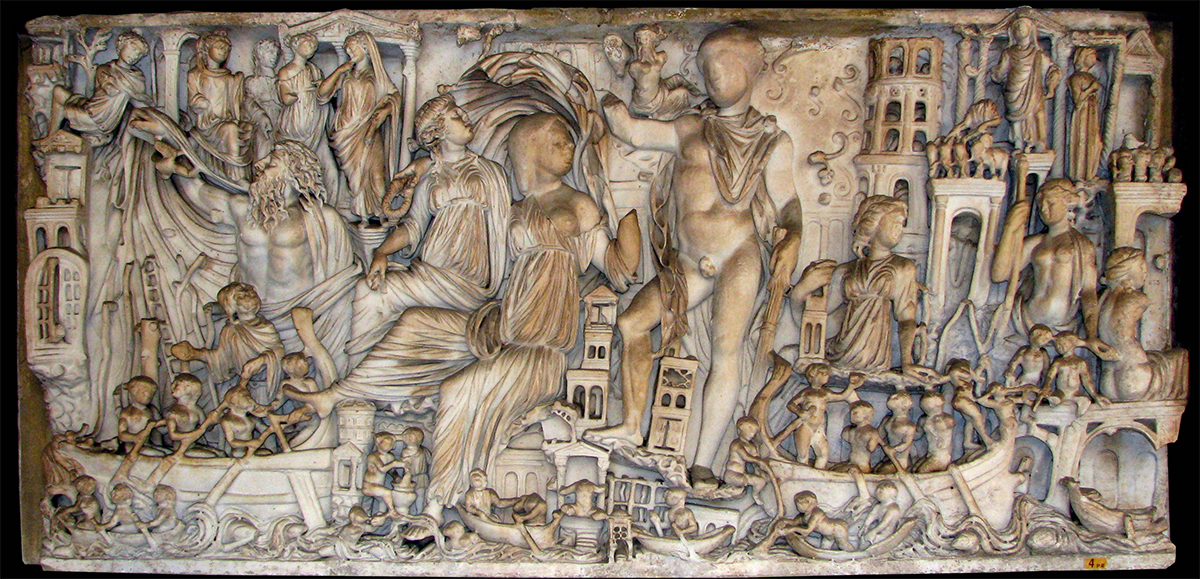
In base al principio “Libertas id est civitas” (la libertà è la cittadinanza, cioè la libertà sta nell’essere cittadini Romani) e allo ius commercii (il diritto di commerciare) era aperta al liberto la possibilità di possedere legalmente, quindi comprare, vendere, e stipulare personalmente qualunque tipo di contratto. Eppure, gli ex proprietari o patroni (patronii, singolare patronus) avevano diritto a parte dell'eredità degli schavi che avevano liberato.
Dopo che la lex Papia 41 entrò in vigore sotto Augusto, tutti i liberti che avevano meno di tre figli e possedevano almeno centomila sesterzi erano obbligati a lasciare in eredità una parte della loro proprietà al loro patronii. L’entità della quota dipendeva dal numero di discendenti che il liberto aveva. Alla sua morte, un liberto con due figli doveva lasciare un terzo dei suoi beni al suo patrono. Se il liberto aveva un solo figlio, il suo patrono riceveva metà dell'eredità, e se non aveva figli, al patrono andava l'intera eredità42. Ciononostante, i liberti guadagnavano parecchio denaro dall'equipaggiare navi e dal commerciare su larga scala che potevano svolgere indipendente o insieme al loro patrono. I bambini che nascevano schiavi (vernae) in casa di un padrone potevano avere un ruolo speciale nella famiglia, essere considerati come figli e figlie surrogati del padrone. Coloro che venivano liberati prematuramente o senza che fossero state completate le formalità legali, chiamati latini juniani, subivano restrizioni alla libertà personale e nell’ottenere la cittadinanza. Come eredi, continuavano a portare il nome del loro patrono, erano responsabili della sua tomba e quindi contribuivano a preservarne la memoria43. Tuttavia, i latini juniani venivano coinvolti negli affari marittimi, e Claudio promise la cittadinanza romana a coloro che accettavano di servire a favore di Roma nell’approvvigionamento di grano 44.
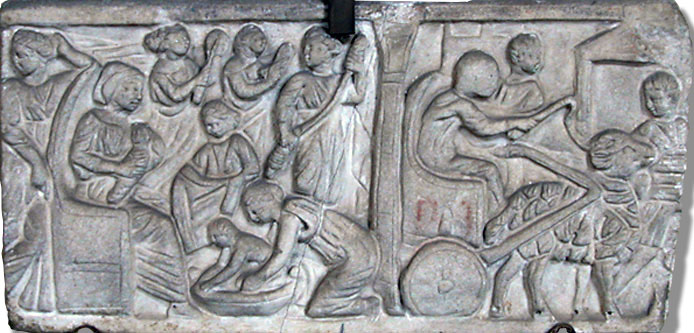
Conclusione
Considerato ciò che abbiamo visto finora, confrontare la schiavitù del XVII secolo con quella in epoca romana è quasi impossibile. È vero che gran parte degli schiavi Romani, come gli schiavi africani del XVII secolo, erano ottenuti rivendendo i popoli conquistati come "bottino di guerra" attraverso i mercati degli schiavi. Ma il confronto, di fatto, finisce qui.
Nel XVII secolo, gli africani dalla pelle scura non erano considerati esseri umani a pieno titolo e non dovevano essere trattati come tali.
Per i Romani invece, chiunque poteva diventare schiavo per vari motivi, indipendentemente dall'origine, dalla razza, dalle capacità o dall'intelligenza. Anche un cittadino romano libero poteva diventare uno schiavo.
Molti schiavi potevano riconquistare la libertà per merito. Potevano, in alcuni casi, anche comprare la propria libertà. Questi cosiddetti liberti di solito restavano membri della "famiglia" dell'ex padrone, che in quel caso diventava il loro patrono. Molti continuavano a fare lo stesso lavoro di prima, ma come partner commerciali anziché come schiavi.
Certo, al tempo dei Romani molti schiavi, nelle miniere, nei campi o nelle arene non ottennero mai la libertà e vissero una miserabile esistenza fino a quando non furono redenti dalla morte.
La schiavitù era un fenomeno socialmente accettato nei tempi antichi. Possedevano schiavi non solo i ricchi, ma anche le classi medie e quelle inferiori sufficientemente agiate. In certi periodi la popolazione era composta più da schiavi e liberti che da cittadini originari. Man mano che gli schiavi diventavano più preziosi agli occhi dei proprietari, ottenevano più diritti e status, anche se di modesta entità. Agli schiavi venivano assegnati appezzamenti di terra e potevano vivere dei prodotti coltivati, pagando al padrone una certa percentuale di tali proventi. Addirittura, nella metà del IV secolo il governo romano approvò una legge che proibiva la vendita di uno schiavo agricolo separatamente dalla sua terra. Questi schiavi erano quindi legati alla loro terra allo stesso modo degli odierni locatari. Potevano sposare inquilini liberi, acquisire proprietà e passare la loro “proprietà” ai loro figli. Così, la posizione degli schiavi agricoli nel tardo impero cambiò decisamente in meglio.
In termini numerici e commerciali, in nessuna società della storia umana gli schiavi hanno svolto un ruolo così esteso ed importante come nell'antica Roma. Roma non era solo una società con schiavi; era una società di schiavi.

Traduzione Italiano: Elisa Segreti
- Fonti
- - Frank Beijaard - http://www.geschiedenisbeleven.nl/racisme-en-slavernij-in-de-romeinse-wereld/
- - Wikipedia – La schiavitù nell'antica Roma.
- - https://www.forumromanum.org/life/johnston_5.html
- - Nicolas Tran - Lo stato lavorativo degli schiavi e dei liberti nei grandi porti del mondo romano (I secolo BCE-Second Century d.C.).
- - Arienne King - "L'impero romano dell'Africa occidentale".
Note- 1: Oggi si usa il termine “persona ridotta in schiavitù”. In questo articolo, tuttavia, userò la parola “schiavo” perché questa parola aveva molti significati ai tempi dei Romani.
- 2: Frank Beijaard in Razzismo e schiavitù nel mondo romano – www.geschiedenisbeleven.nl
- 3: Mosaico romano di Veii (Isola Farnese) III o IV secolo d.C. - Badisches Landesmuseum Karslruhe (Germania).
- 4: Servus - Termine latino per schiavo.
- 5: Foto – www.imperiumromanum.pl
- 6: Feronia - Personificazione della libertà e dea patrona dei liberti, dea libertorum.
- 7: Tomba 49, Isola Sacra Necropolis - Portus.
- 8: Foto- Jean-Pierre Dalbéra (Flickr).
- 9: Gaius, Institutiones 1.3.2 – Trattati sulle leggi romane.
- 10: Ius gentium – insieme di regole giuridiche a validità universale, in contrasto con lo ius civile che riguardava solo i rapporti tra cittadini Romani.
- 11: Foto – Rilievo trovato a Izmir (Turchia). Ashmolean Museum.
- 12: Foto – Karen Carr (colonna di Marco Aurelio a Roma - 180-190 d.C.).
- 13: Il titulus (etichetta) che gli pendeva al collo indicava che era uno schiavo. Questa etichetta conteneva informazioni essenziali sulla persona schiava, incluso il suo luogo di origine. Italia, intorno al I secolo d.C. (British Museum).
- 14: Marchio di uno schiavo, trovato a Roma (British Museum).
- 15: Museo di Cartagine.
- 16: Marcus Terentius Varro, Rerum rusticarum libri III (Sull'agricoltura in tre libri).
- 17: Harris, W. V. (2000). "Trade". La storia antica di Cambridge: l'alto impero d.C. 70-192. Vol. 11. Cambridge University Press.
- 18: Brunt, Conflitti sociali nella Repubblica romana, pp. 56–57.
- 19: Mosaico di Dougga, (III secolo d.C.) Foto di Dennis Jarvis.
- 20: Archivio della civiltà romana, 03 febbraio 2009 in "Wayback Machine".
- 21: Johnston, Mary. Vita romana. Chicago: Scott, Foresman and Company, 1957, pag. 158-177.
- 22: https://www.roman-britain.co.uk/life-in-roman-britain/mining-in-roman-britain/
- 23: Alfred Michael Hirt, Miniere e cave imperiali nel mondo romano: aspetti organizzativi 27–BC AD 235 (Oxford University Press, 2010), sett. 3.3.
- 24: Adolf Berger. 1991. Dizionario enciclopedico del diritto romano. American Philosophical Society (ristampa). Pag. 706.
- 25: Lionel Casson, "Gli schiavi delle galee", Transactions and Proceedings of the American Philological Association, vol. 97 (1966).
- 26: Unger (1980), pag. 36.
- 27: La storica francese Christel Freu ha dimostrato, nel 2009, che il saccarius era colui che sovrintendeva ai portatori e non, come spesso si suppone, i portatori stessi. Il nome di un'occupazione di solito designava il datore di lavoro e non il dipendente. Christel Freu, “Scaricatori di porto e facchini nel mondo romano: riflessioni basate sul Codex Theodosianus 14.22.1 criguardante il corpo dei saccarii nei porti Romani”
- 28: Vedi il nostro articolo 'Winter Shipping'.
- 29: Rilievo del II secolo d.C. scena portuale di scarico di anfore nordafricane. Al tavolo tre i supervisori, uno dà una ricevuta di accompagnamento al lavoratore portuale, l'altro annota ciò che la terza persona detta.
- 30: Modii (singolare modium) - misura per il grano. 1 modium pesava circa 6,5 kg.
- 31: Vedi il nostro articolo 'The Collegium, the Roman guild'.
- 32: CIL 14.246, 250, and 251.
- 33: Museo Lapidario di Avignone.
- 34: Philostratus, Vita Apollonii 7.16.
- 35: Marziale, Epigrammi 4.64.22.
- 36: Residente in Caria (Anatolia sud-occidentale).
- 37: Foto - una delle 4 anfore gallesi dal Museo di Maidstone
- 38: Digest 14.5.8pr.
- 39: Scena da un mosaico del III secolo d.C. Museo Bardo, Tunisi.
- 40: Sarcofago trovato vicino alla Porta Latina a Roma. Ora ai Musei Vaticani (inv. 927).
- 41: 41. La Lex Papia et Poppaea fu una legge romana introdotta nel 9 d.C. per incoraggiare e rafforzare il matrimonio. La legge conteneva disposizioni contro l'adulterio e contro il celibato dopo una certa età
- 42: Gaius, Institutes 3.42.
- 43: Ibid., 3.56. Per lo status dei latini juniani all'inizio del periodo Augusteo, vedi Pedro López Barja de Quiroga, “Latini juniani: Status e numeri,” Athenaeum 86, n. 1 (1998): 133-63
- 44: Gaius, Institutes 1.32c; Tchernia, I Romani e il commercio, 51-52.
- 45: Mosaico a Palazzo Diotallevi a Rimini. (Foto Frederico Ugolini).






 We are committed to providing versions of our articles and interviews in several languages, but our first language is English.
We are committed to providing versions of our articles and interviews in several languages, but our first language is English.